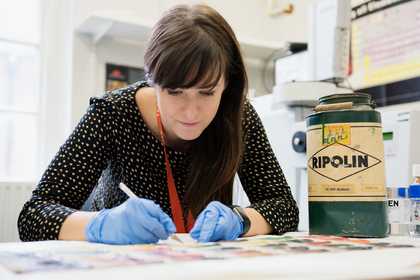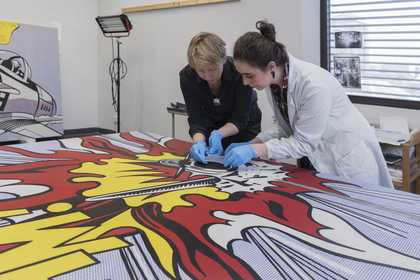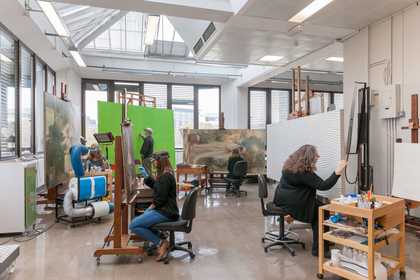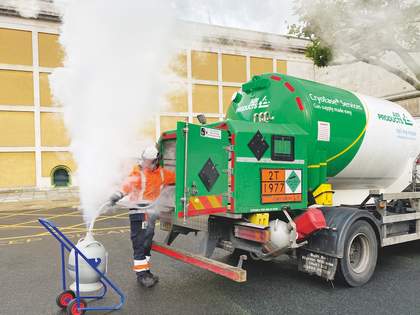
Photo © Figgy Guyver
Once a month, Tate conservation scientists receive a delivery of liquid nitrogen, a substance that is needed for some scientific instruments that are used for analysing materials found in artworks. Each delivery arrives in a cryogenic tanker and the liquid nitrogen is dispensed into a container called a dewar. As it is dispensed into the dewar, the liquid nitrogen makes the surrounding air very cold, which causes a cloud of fog to form.
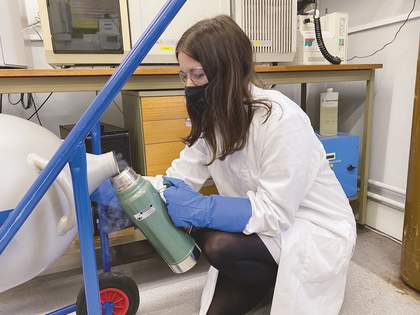
Photo © Figgy Guyver
The dewar is then wheeled inside to the conservation science laboratory by a member of the team.
A small amount of liquid nitrogen is decanted into a flask before being poured into a Fourier Transform Infrared Spectrometer (FTIR). The FTIR instrument has a specialised detector which needs to be cooled using the liquid nitrogen. As Tate conservation scientist Dr Judith Lee (pictured) explains, FTIR is a scientific analysis technique that uses infrared light to analyse the chemical makeup of tiny samples taken from works of art. The tiny samples used for FTIR are less than the size of a full stop but can be used to identify the main types of polymers, pigments and additives that are present in a work of art. Understanding the materials present helps us to explore how works of art are created and to inform decisions as to the best way to care for, store and display artworks.
Tate Etc. talked to Judith Lee, Conservation Scientist, Tate.

